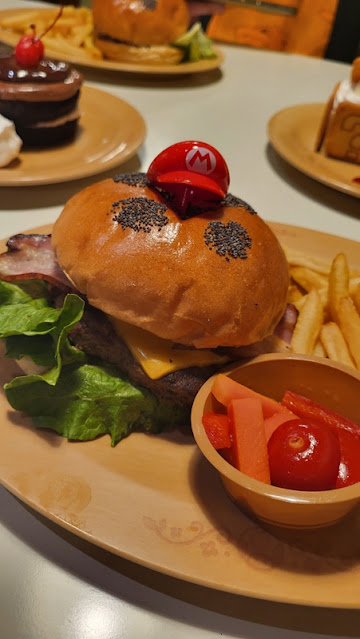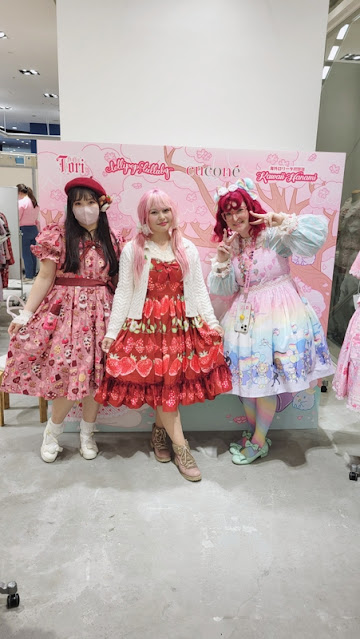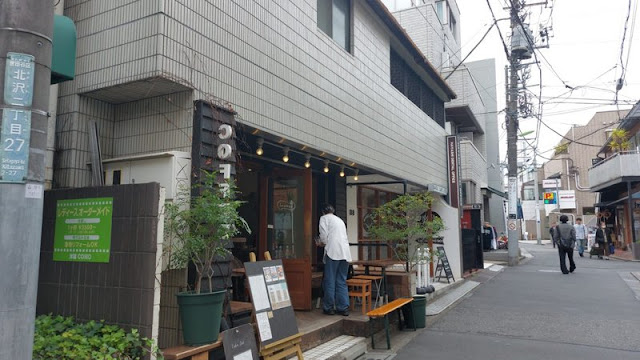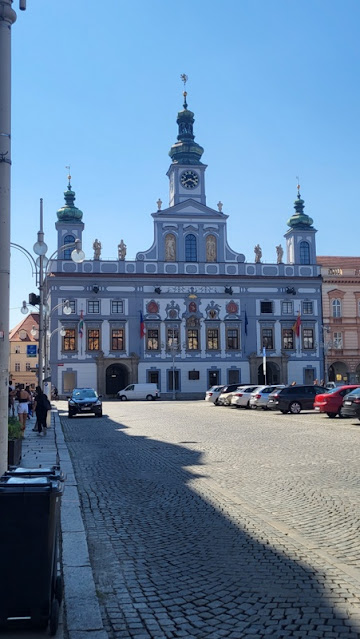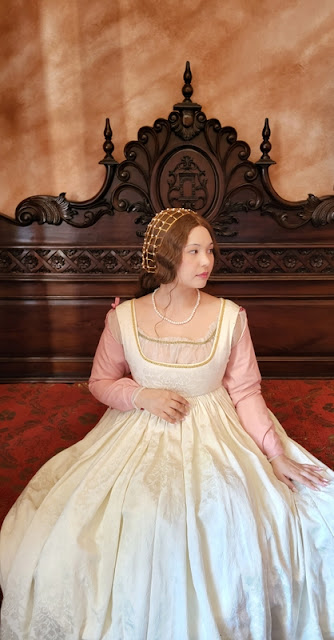Hello lovelies,
this post marks about half-time of our trip to Japan and boy oh boy, it's been more than a year since the trip. But I am dedicated to talk about it and show pictures because as I often stated, that this blog is kind of my brain and I like to browse it from time to time and see what I did, wore, or said.
So then, let's start with day 12
because it was finally time for the universal studios osaka! We have been so looking forward to this and it did not disappoint even though getting a time slot for the super Mario Land was stressful.
We took a ride on the white shark ride and it was fun. Our captain (or the one who was "driving" the boat) was so invested in the story and was so full of energy even though it felt so fake.
We roamed around and I got some snacks!Then off to more rides.And off to more food. This was an onion flower, it was so cute!After a parade we got first in lining for a churro truck and I got somekind of themes churros but I don't really remember what anymore.
We waited 2h for the 10min Minion ride and walked around all day and I was tired, my feet hurt and I was already ready to go but we still had super mario land....Finally! But again, we waited 90 for a 1min yoshi ride. Ugh. And then we decided to eat the the super mario store and guess what, even more waiting. haha. But we tried to get as much as possible and eat as much as possible. Hello super mario burger!I'm unsure what that was...curry?And don't forget the dessert..
Day 13
The next day we took the train back to Tokyo. Of course, with a train station bento. They are the best.
This cheese dessert was...not good.
We weren't really able to do much afterwards as we arrived around 3pm and had to get to the hotel which was also located in Ikebukuro. We had a park around the corner and the white blossoms were so beautiful.
But we went shopping...and I met fluffy tori and lollipop lullaby and cucone europe. They had a pop up store at Marui Shinjuku Annex.
Hias and I also found a Pasta store and decided to try it out. It was okay...not the best but also definitely not the worst.
And here are the goodies I bought! A ring and a headpiece from Baby the stars shine bright.And new stockings from fluffy tory and a lingerie set from cucone.
Plus a cute shirt from lollipop lullaby. Isn't it cute? I feel this.
Day 14
In 2015 we visited Shimokitazawa and we had an amazing haul (see my blog post). We got so many second hand items from lolita or gyaru brands but this time, we did not really find the second hand shops anymore. Turns out, most of them closed down. Boo.
Nevertheless, we found more vintage stores than before.
We rested a bit with a good matcha before going on. they are so cute! And finally in bloom. No idea what it was but ice-cream with fried dough balls? Hell yes.
And here is the haul...a France Maison de fleur bag.Small petticoatand old liz lisa skirtand another one.and a vintage peignoir. In the evening we went to McDonald and I regretted it a bit because it was so much food...but I just wanted to taste everything.
It's not that I pigged out and ate everything, I also got a matcha dessert. RIP
If you enjoy this blog and want to support it, consider leaving a small donation via PayPal. Every bit helps keep things running and lets me keep creating more content just for you. You can donate by clicking the link below:
Thank you so much!
All the best,
Auris Lothol











